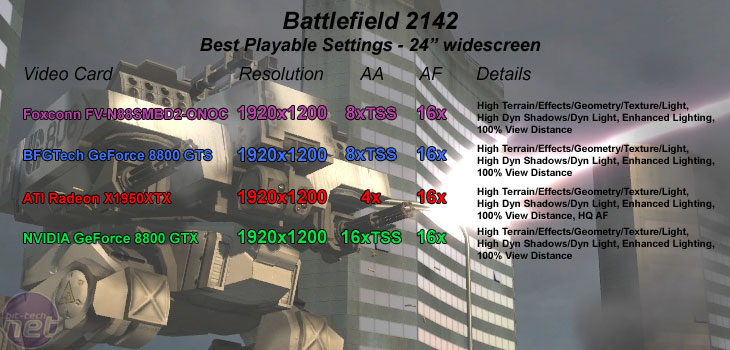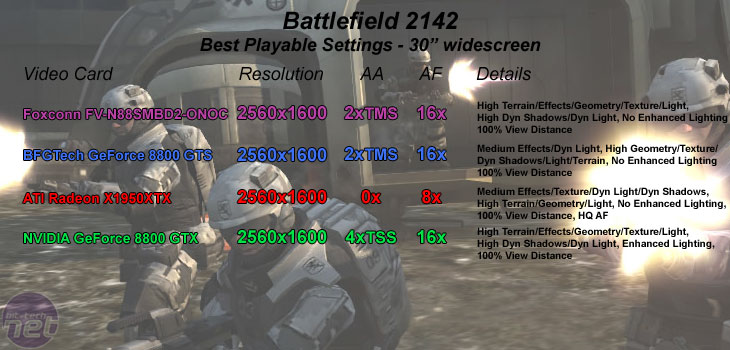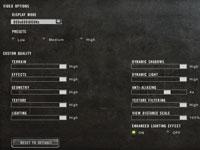Battlefield 2142:
Publisher: EA GamesWe used the full retail version of Battlefield 2142 patched to version 1.06. It follows closely in the footsteps of Battlefield 2 and is based on the same game engine, albeit with a few modifications and improvements. The game supports normal mapping, parallax mapping, full-resolution dynamic shadowing, post processing and fog. DICE has also implemented a new enhanced lighting effect that provides a nice bloom effect.
We played three five minute run throughs of the 'Cerbere Landing' map, reporting the median average frame rate. There is no ready way to duplicate testing situations manually in this game, so we felt that taking a typical slice of action from the game was the best way to report our findings.
We controlled anti-aliasing from inside the game if enough modes were available, while we controlled anisotropic filtering from the control panel so that we could enable 16xAF.
________________________________________________________________________________
24" widescreen gaming:


It's a familiar story, but the GTX was in a different league again, delivering an incredible gaming experience on our 24" widescreen monitor with 16xAA plus transparency supersampling and maximum in-game details enabled. Gameplay was even acceptable with 16xQ AA enabled, but the frame rates were a little too low for personal preference (30 fps minimum, 46 fps average) and the image quality advantages weren't all that great to be honest.
________________________________________________________________________________
30" widescreen gaming:


Comparatively, we had to reduce effects and dynamic lighting quality from high to medium in addition to leaving enhanced lighting off in order to maintain smooth gameplay on BFGTech's GeForce 8800 GTS. Both of the 8800 GTS's were appreciably faster than the Radeon X1950XTX in this title, as the latter only maintained smooth frame rates with 0xAA and the majority of the in-game options set to medium.
On the other hand, GeForce 8800 GTX cruised along at 2560x1600 4xAA (with transparency supersampling), 16xAF and maximum in-game details - the gameplay experience was engaging and immersive and looked simply stunning. That's not to say that the gaming experience delivered by the BFGTech and Foxconn GeForce 8800 GTS at this resolution was poor in any way, though.

MSI MPG Velox 100R Chassis Review
October 14 2021 | 15:04








Want to comment? Please log in.